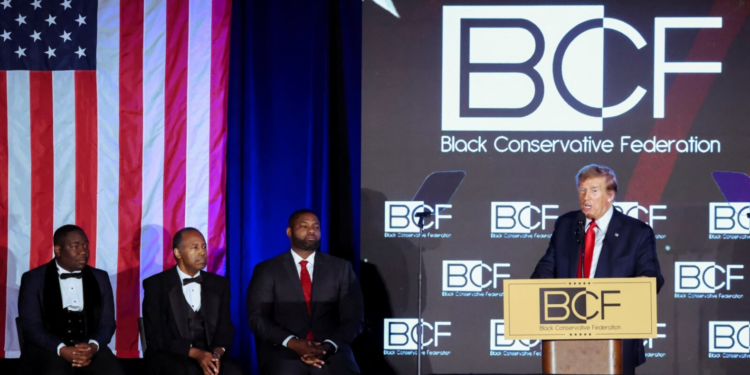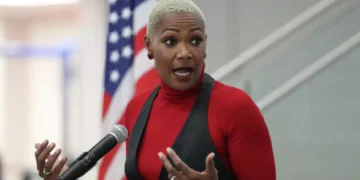Nov 10, 2024 Story by: Editor
Donald Trump has secured victory in the 2024 U.S. presidential election, bolstered by increased backing from several groups that had leaned Democratic in recent years. His core supporters remain primarily white, working-class Americans, but this election saw significant gains among Black and Hispanic voters, especially younger men.
Trump’s success can be attributed in part to an expanded “coalition,” including support from younger, college-educated voters. This coalition helped him capture over 50.9% of the popular vote, tipping crucial battleground states in his favor and securing the required 270 Electoral College votes to defeat Vice President Kamala Harris.
Notable Shifts Among Black Voters
Although Trump’s inroads with Black voters were modest, they proved influential, driven by younger Black men’s support. His appeal led to a doubling of his support among Black men under 45 compared to 2020, with about 30% of this demographic voting for him. In key states like North Carolina and Georgia, his share of the Black vote rose by 5 percentage points from 2020 levels.
Despite most Black voters siding with Harris, Trump’s messaging on economic issues resonated with a meaningful portion of the demographic. Arthur Beauford, a 28-year-old from Marietta, Georgia, explained his vote, saying, “I’m not necessarily the biggest fan of Trump, but I’ll definitely take Trump over Harris,” according to Politico.
Historic Gains in Hispanic-Dominated Democratic Areas
Economic concerns played a significant role in Trump’s support among Hispanic voters. A Pew Research Center poll indicated that 52% of voters were confident in Trump’s economic policies, an increase from 40% in 2020. Nationally, he captured 45% of the Hispanic vote, up 13 percentage points from 2020 and surpassing the previous record set by George W. Bush in 2004.
In traditionally Democratic areas like Florida’s Miami-Dade County, Trump’s economic messaging resonated deeply. Samuel Negron, a Pennsylvania state trooper from the Puerto Rican community, told the BBC, “We liked the way things were four years ago,” referencing rising costs under current policies. “A lot of us have woken up…We realized things were better then.”
White Women Focus on Economic Concerns Over Abortion Rights
Harris saw reduced support among women compared to Biden’s 2020 campaign, as Trump improved his standing among white women. Access to abortion remained a major concern among millennial women, but many working-class and suburban white women prioritized economic issues, according to AP VoteCast. Trump’s focus on reducing inflation and economic stability resonated, especially with rising costs for essentials.
Increased Male Support Driven by Influencers and Economic Policies
Trump’s support among male voters rose to 55%, with analysts attributing gains among Gen Z and millennial men to his presence in the “manosphere” — online communities focused on traditional masculinity. High-profile appearances, like a three-hour discussion on Joe Rogan’s podcast and endorsements from figures such as Elon Musk and influencer Jake Paul, helped build support. Musk also contributed over $100 million through his America PAC to support Trump’s voter mobilization in swing states.
While white men made up the majority of Trump’s male supporters, increases among Black and Hispanic men were especially noteworthy, likely due to his stances on immigration control, lower taxes, and trade tariffs. These gains were particularly impactful in battleground states like Pennsylvania and Georgia.
Stronghold Among White Working-Class Voters
Harris maintained support from about 4 in 10 white voters, a rate similar to Biden in 2020. However, Trump’s standing among white voters without a college degree remained solid, especially in Rust Belt states like Michigan, Pennsylvania, and Wisconsin. Despite early polls suggesting Harris might gain traction among white voters, Trump reversed his 2020 outcomes in all three states.
Independent Senator Bernie Sanders remarked on this shift, saying, “It should come as no great surprise that a Democratic Party which has abandoned working-class people would find that the working class has abandoned them.” Source: News Week

















